Small Torzhok is famous for a large number of architectural monuments. It is a pity that many of them are not in the best condition, but it is gratifying that historical buildings, although slowly, are being restored, which is why the town is becoming more and more presentable. Here is the famous Borisoglebsky Monastery - practically the same age as the Kiev-Pechora Lavra, ancient churches that have been preserved since the 17th century, and neat mansions of merchants who made up a large part of the population of Torzhok in the 19th century.
The city is also included in the list of "Pushkin's places", the great poet has been here more than once. Another interesting fact: it was in Torzhok that Pozharsky cutlets appeared, without which the menu of any restaurant of Russian cuisine cannot do today. And finally, the famous architect N.A. Lvov was born here, who at one time did a good job on the appearance of St. Petersburg.
What to see and where to go in Torzhok?
The most interesting and beautiful places for walking. Photos and a short description.
- Boris and Gleb Monastery
- Resurrection Monastery
- Novotorzhsky Kremlin
- Monument to N. A. Lvov
- Museum of the factory Torzhok gold embroiderers
- House of the Belt
- Museum named after A. S. Pushkin
- Helicopter Museum
- Vasilevo
- Starovoznesenskaya Church
- Transfiguration Cathedral
- Church of Elijah the Prophet
- Michael the Archangel Church
- Manor Znamenskoye-Rayok
- Tveretskaya embankment
Boris and Gleb Monastery
The Borisoglebsk monastery is the oldest in the Tver region. It was founded at the beginning of the 11th century, but written sources contain the earliest information, only starting from the 16th century. The beginning of the monastery was laid by the Monk Ephraim of Novotorzhsky, who at that time was in the service of Prince Boris. The early buildings were not preserved, as the complex was seriously damaged during the Time of Troubles and was practically destroyed. The oldest building dates back to the 17th century.
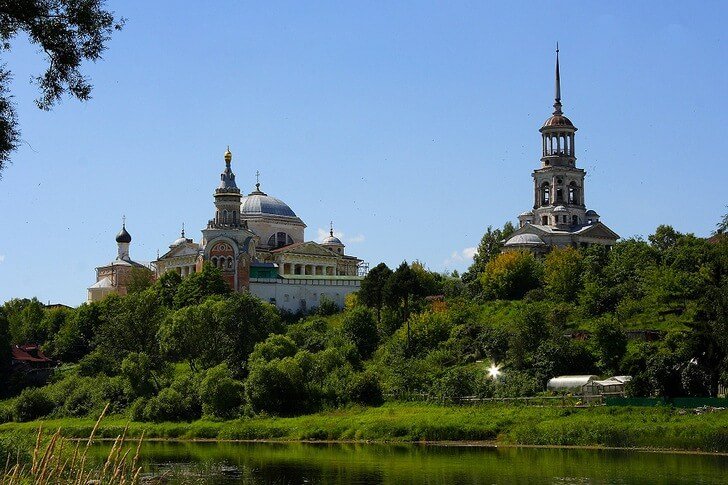
Resurrection Monastery
Nunnery of the 16th century. At present, the monastery is not limited only to the reception of pilgrims, but also actively develops cultural tourism. Indeed, the visitor has something to see: the main Church of the Resurrection, built in 1796, which houses a valuable icon of the Resurrection of Christ, an earlier bell tower from 1766, the Church of the Beheading of John the Baptist and monastic cells of the middle and early XIX century.
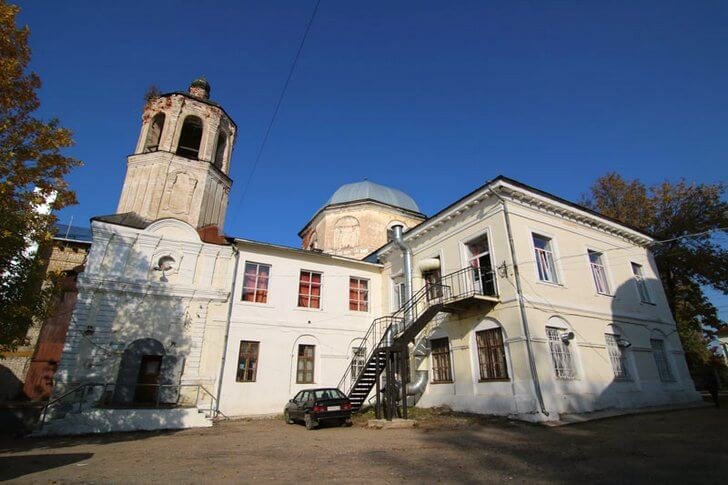
Novotorzhsky Kremlin
An ethnographic complex opened in 2012 on the historical territory of the Upper Settlement. It represents expositions of weapons, military equipment and armor, located in wooden huts and in the open air, as well as reconstructions of dwellings, workshops and shops typical of Russian settlements of the 11th-17th centuries. There was also a stadium where impromptu fights take place.
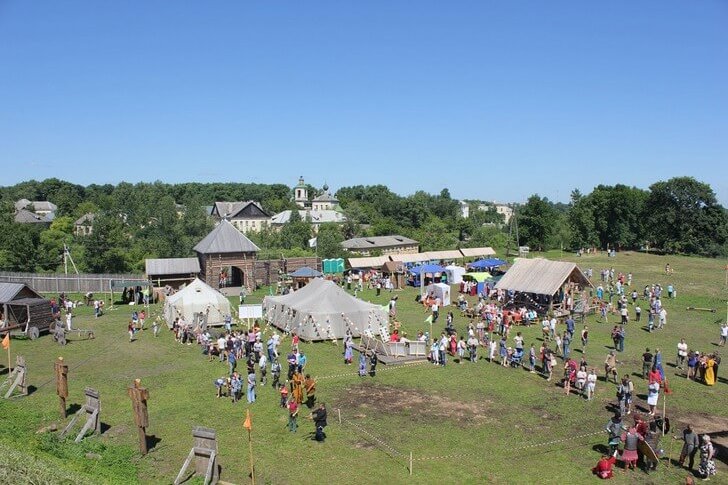
Monument to N. A. Lvov
The architect N. A. Lvov was born near Torzhok in the middle of the 18th century. He is the author of projects for many estates and park ensembles located in the Moscow, Tver and Novgorod regions. He also worked on the plan of the main cathedral of the Borisoglebsky Monastery. A monument in his honor was erected in 2004 with funds raised by the Foundation. N. A. Lvov with the support of the city administration.

Museum of the factory "Torzhok gold embroiderers"
Sewing with gold threads is the original craft of Torzhok. In the 18th-19th centuries, local craftswomen embroidered shoes and dresses for noble ladies, and also decorated textiles for imperial palaces. Over time, a whole factory appeared in the city and, with it, a museum exhibiting products made mainly in the 20th century (epaulettes, banner edging, banners, general stars, there is even a portrait of Stalin).
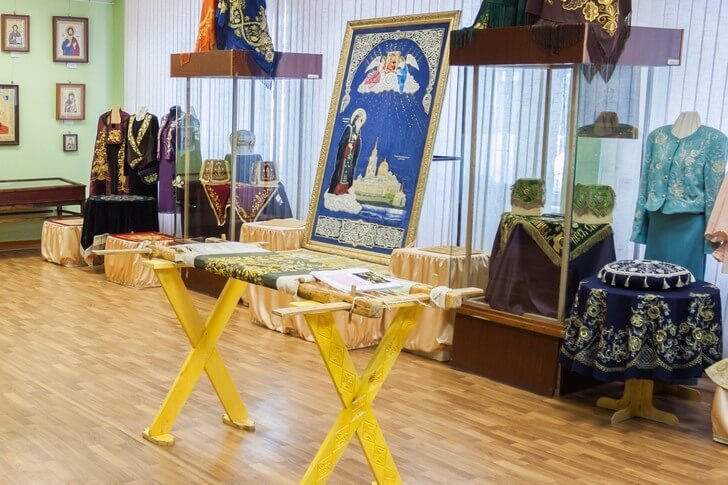
"House of the Belt"
The museum opened in 2013 on the territory of the Olenin-Balavensky estate, built in the 19th century. The main exhibit of the collection is the world's largest belt, 12 meters long and 25 cm wide. It was made by local gold embroiderers. The product is embroidered with patterns of Orthodox themes, it was even consecrated in the church. It took more than 50 km of gold thread to make the belt. The museum also houses a small exposition consisting of everyday and festive belts.
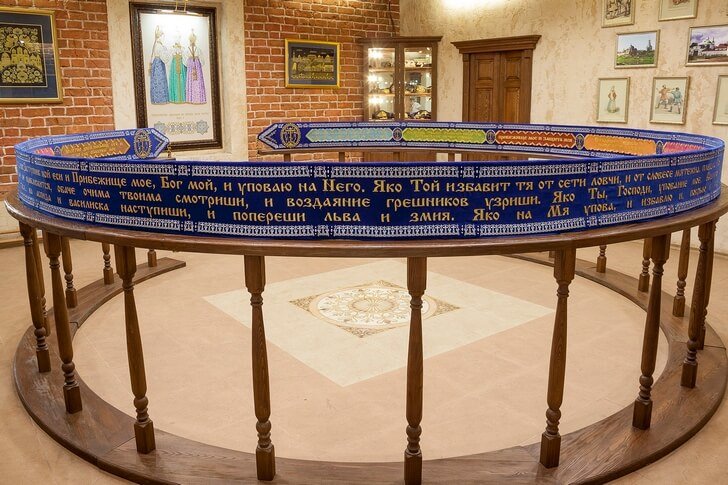
Museum named after A. S. Pushkin
A. S. Pushkin often visited Torzhok between 1811 and 1836. That is why the city was included in the "Pushkin ring of the Upper Volga region" - a tourist route with a length of more than 200 km. The museum exposition is located on the territory of a wooden mansion. It consists of manuscripts and notes of the poet, as well as engravings with landscapes of Moscow, St. Petersburg and Tver.
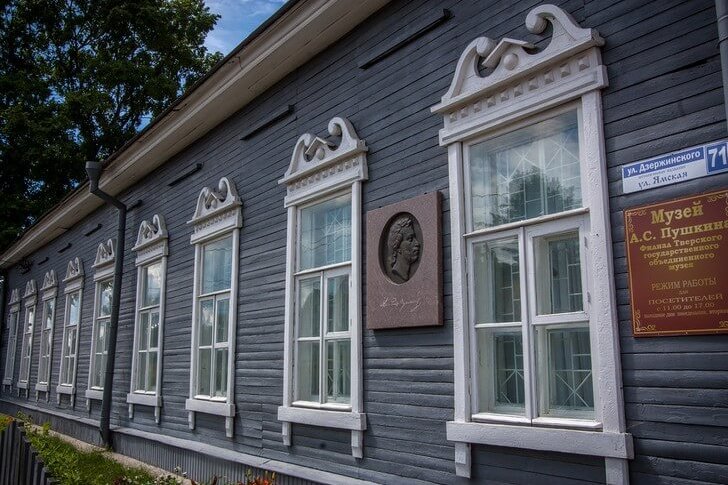
Helicopter Museum
In the museum, visitors can see various models of helicopters produced at different times in the USSR (mostly combat models are presented). The collection was created in the 1990s on the basis of a former secret facility. Here are placed both old models and modern ones adopted by the Russian Air Force (for example, MI-8), as well as equipment that was exported abroad for use by foreign armies.

"Vasilevo"
Ethnographic open-air museum, created on the territory of the estate of the same name in 1976. It consists of houses - examples of wooden architecture of the XVIII-XIX centuries, brought from different regions of the Tver region. There is a rather interesting object here - an arched bridge built of boulders, designed by N.A. Lvov. The design was firmly entrenched in the name "Devil's Bridge" with the light hand of the author of one of the Soviet guidebooks.
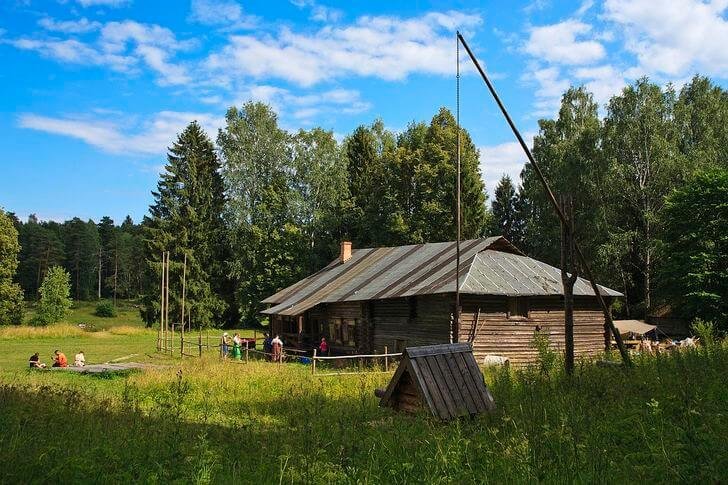
Starovoznesenskaya Church
A wooden temple on the outskirts of the city, presumably erected at the beginning of the 18th century. Over the following centuries, the church was repeatedly remade, given the fragility of the material, which quickly fell into disrepair and dilapidated. In the middle of the 19th century, the building was moved and reconstructed, and in its place it was decided to build a new stone church. Another restoration took place in the 1980s.
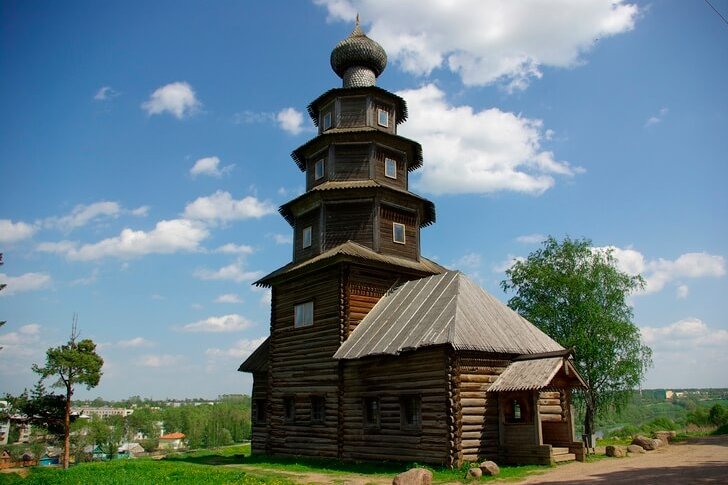
Transfiguration Cathedral
The magnificent five-domed cathedral adorns the center of Torzhok. It was erected in the 19th century in the solemn Empire style, presumably according to the project of the architect C. Rossi. The entrances to the temple are decorated with Doric porticoes and classical columns; beautiful domes crown the roof. In the 1930s, it was closed and looted, as a result of which unique frescoes and precious church utensils were lost.
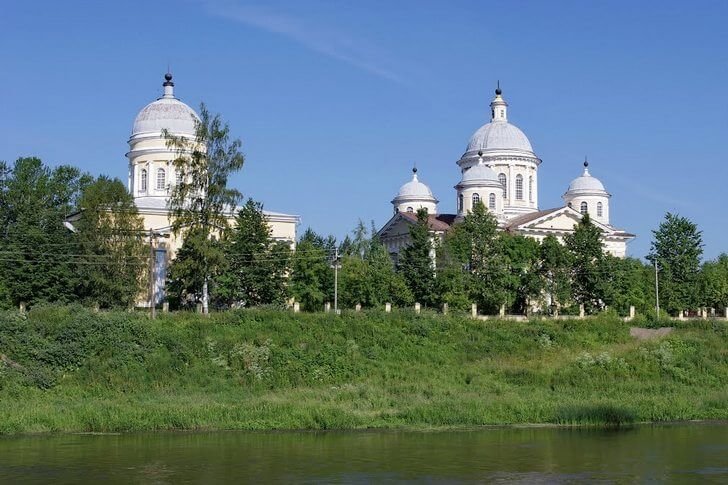
Church of Elijah the Prophet
Ilyinsky Church was erected in the first half of the 19th century on the site of two dilapidated churches. It is known for the fact that the body of Alexander I rested here for one night, which was transported from Taganrog to St. Petersburg. The structure consists of a rectangular main building crowned with a large dome and a free-standing three-tiered bell tower, made according to all the canons of the classical style.

Michael the Archangel Church
A stone five-domed temple, located on a hill and therefore clearly visible from afar. It was built in the 17th-18th centuries to replace an earlier building that was destroyed in a fire. In Soviet times, the church was the only one operating in the district; believers from all neighboring cities and villages came here for services. The main shrine of the temple is an icon with a particle of the relics of St. Ephraim (the founder of the Borisoglebsky monastery).

Manor Znamenskoye-Rayok
The mansion of the second half of the 18th century, built according to the project of a group of architects, which included N. A. Lvov, K. Butsi, V. Irven, F. Ruska. Of the entire ensemble, only the main building with side colonnades has survived to this day. All pavilions and pavilions that adorned the park space in the past were lost. At the moment, the building is under restoration, after the completion of work it is planned to open an educational institution in it.
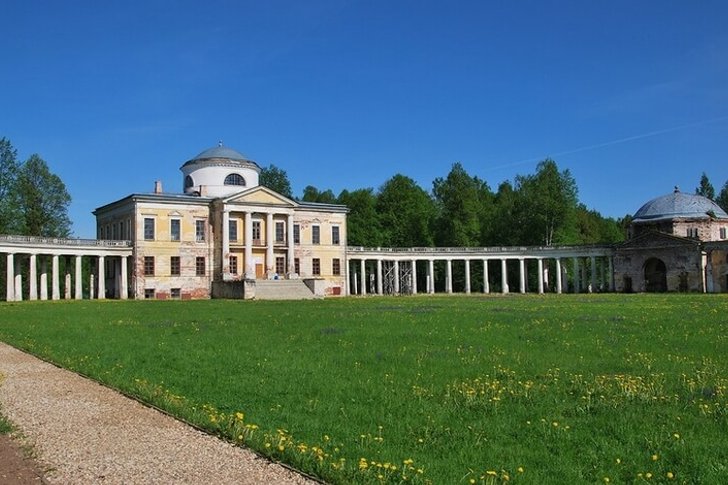
Tveretskaya embankment
The city embankment, which, after the last restoration, has acquired a cozy and well-groomed appearance, turning into a hallmark of Torzhok. During the restoration work, they tried to preserve the atmosphere of the 19th century inherent in this place. It should be noted that the craftsmen managed to cope with the task - neat stone mansions really look like historical merchants' houses with elegant facades.
